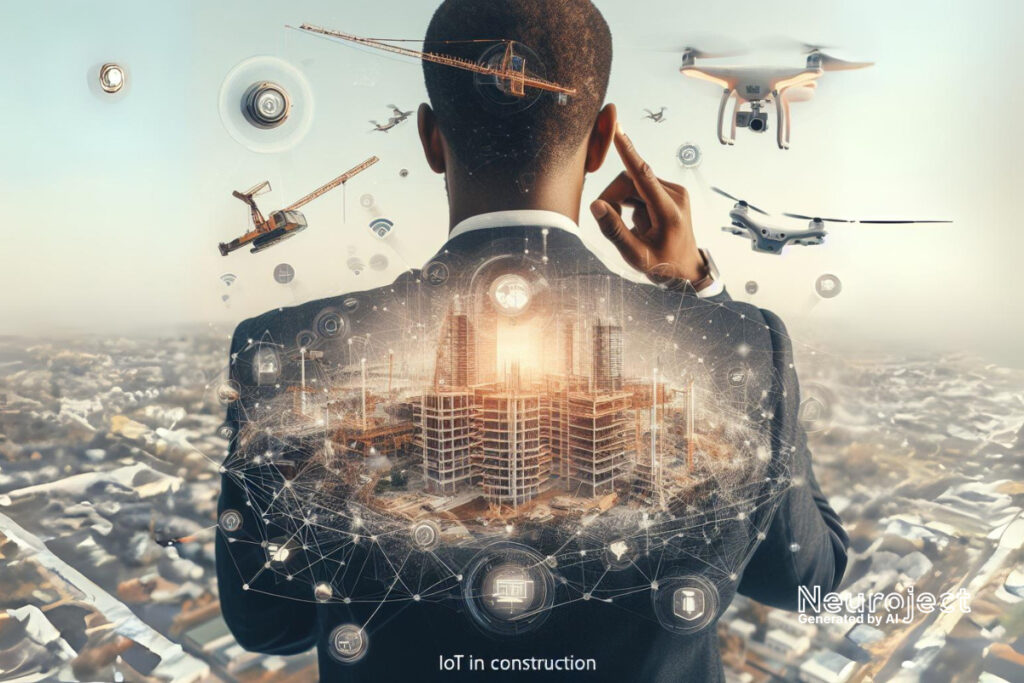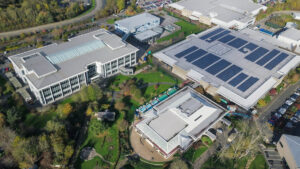Exclusive Neuroject Article: The concept of IoT, or the Internet of Things, has been in existence for decades, but recent technological advancements have brought it to the forefront. IoT, which encompasses the interconnectedness of everyday objects through the internet, facilitating data exchange and communication, has garnered significant attention. In today’s rapidly evolving world, the demand for innovative strategies, methodologies, and technologies is on the rise. The construction industry, in its constant adaptation to a changing world, has embraced IoT as a cutting-edge technology to create smart buildings, optimize resource utilization, and control construction costs.
Notably, the ability to collect and analyze real-time data stands out as one of the primary advantages of integrating IoT into construction practices. By deploying IoT sensors to monitor construction sites, a wealth of information is at one’s disposal, spanning from environmental factors like humidity and temperature to the tracking of on-site personnel. Leveraging this data empowers companies to make more informed decisions regarding their projects and preemptively identify potential safety concerns before they escalate.
According to a report by McKinsey & Company, the construction industry’s productivity has historically lagged behind other sectors, with a 1% annual growth rate over the past two decades. IoT applications in construction have the potential to significantly enhance productivity and efficiency.
Now, let’s delve into the world of the Internet of Things and explore its applications in the construction industry, uncover its associated benefits, and understand the mechanisms of its implementation. Furthermore, we’ll cast a glimpse into the future, considering the challenges it may encounter and the directions it is poised to take.
Table of Contents
What is IoT in Construction?
The construction industry has been changed by the Internet of Things (IoT), a relatively new concept that is severely changing the way we interact with technology in different areas. IoT can also be referred to network of devices, objects, or machines that are embedded with sensors, software, and connectivity allowing them to collect data and seamlessly exchange them. The construction of smart houses, smart cars, and smart cities is deeply rooted in the concept of IoT. Utilizing IoT in these areas can bring out massive innovation, automation, and optimization of resources
In the context of the construct, IoT is a reflection of how technology is evolving to make our lives easier and more enjoyable. To give an idea about this topic take smart houses for instance which have integrated systems that are connected to a central hub or smartphone application, to control settings such as lighting, temperature, home security, and entertainment systems. The core of the Internet of Things concept is this gathering of devices around a single controller. Furthermore, to optimize energy consumption, lower costs, and improve safety and security the sensors in the house collect the needed data and enhance the functionality of household appliances.
Smart cities in the construct, smart cities integrate technology into different aspects of city management such as water management, traffic flow, waste management, public safety, and education to not only increase the quality of life for residents but also optimize the resources keep in mind that smart that are an extension of the IoT concept to a wide scope of community initiatives.
The implementation of IoT systems in the construction of smart cars has led to the creation of autonomous vehicles. The goal of the Internet of Things (IoT) in smart automobiles is to increase safety, lessen traffic, and maximize fuel efficiency.

What are the Applications?
The construction industry benefits from a wide array of applications offered by IoT (Internet of Things), resulting in enhanced efficiency, safety, and resource management. Below are several essential applications of IoT within the construction sector:
- Enhancing Site Safety and Security: IoT sensors have the capability to monitor construction sites in real-time, offering critical data on various safety aspects. These include overseeing worker movements to ensure adherence to safety regulations, monitoring environmental conditions like temperature and humidity, and detecting potential dangers such as gas leaks or fires. Additionally, IoT-enabled cameras and sensors contribute to security by identifying unauthorized access.
- Tracking Assets and Equipment: IoT technology enables the real-time tracking and oversight of construction equipment and assets. This encompasses monitoring the location, status, and utilization of machinery, tools, and materials. It aids in preventing theft, optimizing the deployment of equipment, and ensuring timely maintenance.
- Efficient Resource Management: IoT sensors are employed for the efficient management of resource consumption. This includes monitoring the use of energy and water to minimize waste and enhance sustainability. By scrutinizing resource data, construction companies can identify areas for cost reduction and the implementation of eco-friendly practices.
- Monitoring Site Activities: IoT provides valuable insights into construction site activities. Through the use of sensors and cameras, data related to construction progress, worker productivity, and equipment usage can be collected. This information empowers project managers to make well-informed decisions and identify any bottlenecks in the construction process.
- Streamlining Supply Chain Management: IoT can streamline the management of the construction supply chain. Sensors can keep tabs on inventory levels, promptly detect shortages, and trigger automatic reordering of materials. This ensures a smooth flow of resources and minimizes delays resulting from inventory shortages.
- Optimizing Concrete Curing: IoT sensors integrated into concrete during the casting process allow real-time monitoring of the curing process. This delivers precise data concerning concrete strength, facilitating optimal scheduling of tasks such as formwork removal, pre-stressed cable tensioning, and concrete mix design.
- Efficient Waste Management: Effective waste management is crucial for environmental and safety considerations. IoT sensors can track the levels of waste in disposal bins and schedule timely removal. Proper waste management practices help prevent penalties and reduce the environmental impact.
- Structural Health Monitoring: IoT technology is employed to monitor the structural health of buildings and civil structures. Sensors can identify vibrations, cracks, and other indicators of structural issues, enabling timely maintenance and safety measures.
- Enhancing Worker Safety: Wearable IoT devices like smart helmets and safety vests are capable of tracking a worker’s location and vital signs. This data ensures worker safety and enables swift responses in case of emergencies.
- Integrating Building Automation Systems: IoT sensors and devices can be seamlessly integrated into Building Automation Systems (BAS) to manage and supervise building systems such as lighting, HVAC (Heating, Ventilation, and Air Conditioning), and security. This integration optimizes building performance and reduces energy consumption.
- Utilizing Drones for Site Inspection: Drones equipped with cameras and sensors offer aerial views of construction sites, serving a variety of purposes including site analysis, project planning, progress tracking, and improving safety by reducing the need for human access to precarious areas.
- Leveraging Data Analytics and Predictive Maintenance: IoT generates vast volumes of data that can be analyzed for predicting maintenance needs and enhancing construction processes. The application of data analytics and predictive maintenance allows construction companies to reduce downtime and prolong the lifespan of equipment and structures.
These applications underscore how IoT is revolutionizing the construction industry by enhancing efficiency, safety, and sustainability while concurrently mitigating costs and delays. As technology continues to advance, IoT is expected to play an even more pivotal role in shaping the future of construction.
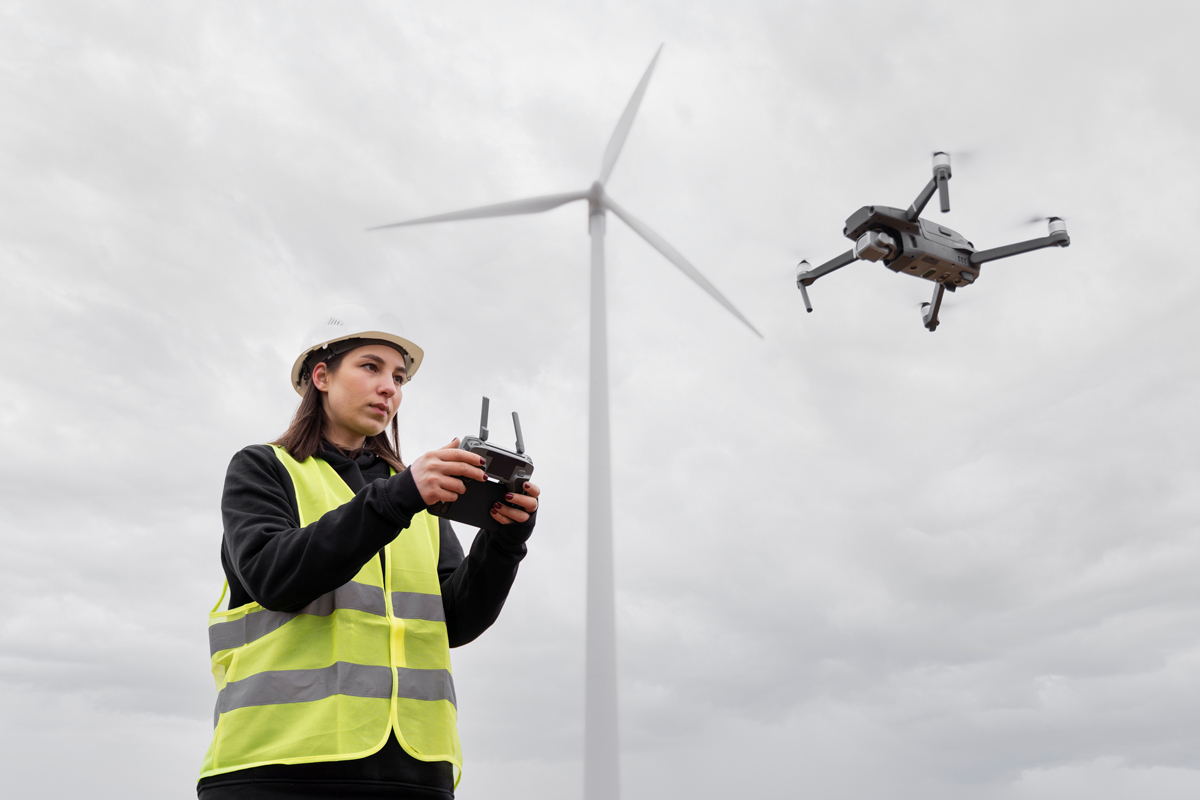
Suggested article for reading: Smart Construction: Top 7 IoT Applications
Benefits of IoT in Construction
One of the main contributors to the global economy is the construction sector, which will soon go through a major change in paradigm due to the development of (IoT). From building design to real construction and maintenance, IoT is already beginning to change the construction industry. Here are a few advantages that IoT can offer the construction sector.
Safety
Ensuring safety and security on construction sites has always been a formidable challenge. However, with the integration of Internet of Things (IoT) technology, these challenges are being effectively addressed. IoT-enabled tags can swiftly pinpoint the location of materials or objects, preventing theft and eliminating the need for manual inspections. Furthermore, IoT facilitates the creation of real-time digital maps of job sites, continuously updating workers about potential hazards, enhancing proactive safety measures. Fatigue-related safety risks are also mitigated through the monitoring of vital signs. Drones contribute by providing accurate survey maps and aerial images, remotely tracking project progress, and bolstering security through real-time tracking.
Performance
In the construction industry, meeting deadlines and targets is of paramount importance. To prevent delays caused by human scheduling errors, IoT technology allows for the automatic assessment of material supply, aiding in maintaining an uninterrupted workflow. This not only improves efficiency but also provides stakeholders with additional time to collaborate, leading to innovative ideas and heightened customer satisfaction.
Maintenance
Effective management of power and fuel consumption is vital to control project costs. IoT technology ensures that every asset’s status is monitored, enabling proactive maintenance and refueling, ultimately reducing waste and enhancing customer satisfaction. Sensors also keep track of material conditions, preventing issues, reducing warranty claims, and turning equipment suppliers into constant partners, allowing clients to focus on their core activities.
Resources Management and Budgeting
Staying within budget is a common challenge for construction companies. IoT aids business owners in real-time tracking and efficient budgeting, making the most of available resources and eliminating waste. By optimizing the timely delivery of equipment and resources, IoT contributes to cost reduction and improved planning.
Concrete Curing
IoT technology is revolutionizing concrete curing by using embedded sensors during casting to monitor the curing process in real-time. This enables precise estimations of concrete strength, optimizing various construction processes and labor expenses.
Structural Health Monitoring
In structural health monitoring, IoT plays a crucial role in identifying vibrations, cracks, and the condition of vital building components and civil structures.
Waste Management
Managing waste is essential on modern construction sites, not only for environmental reasons but also for safety and efficiency. IoT trackers are employed to monitor waste disposal bins and trucks, ensuring timely removal and proper disposal methods to avoid penalties.
BIM Optimization and Digital Twins
Real-time IoT data, combined with historical information from previous projects, offers the potential for predictive analytics and smarter construction. Transitioning from a Building Information Modeling (BIM) model to a digital twin integrates real-time sensor data into a realistic simulation, enhancing construction efficiency.
How to Implement IoT in Construction Site Management?
The management of construction sites is a complex and challenging job, involving a multitude of tasks and stakeholders. However, the integration of Internet of Things (IoT) technologies in construction can improve the management of construction sites, including activity monitoring, personnel management, and order scheduling. Below are some ways in which IoT can be utilized to improve the management of construction sites.
- Monitor Activities: IoT sensors may be used to monitor activity on construction sites in real-time, giving employers useful information about progress and spotting possible dangers and hazards before they become unmanageable. For instance, sensors can track the status of foundation work and notify workers of any problems. To make sure that the tools and supplies are in good working order and accessible when needed, sensors can also monitor their state. Drones can also be used to keep an eye on construction sites, supplying aerial photographs and data about the progress and spotting any problems.
- Manage Personnel: It can be difficult to control the workforce on a construction site, especially when working with a large number of people. By delivering real-time information regarding employee location, hours worked, and productivity, IoT devices can aid in improving people management. IoT sensors may also track employee fatigue levels to make sure they are not working above their recommended limits. Mobile devices can also be used to communicate with employees and give them task assignments and project updates.
- Scheduling Orders: The scheduling of orders for materials and equipment can be challenging on a construction site, particularly when dealing with a large number of suppliers and vendors. IoT technologies can help improve order scheduling by providing real-time data about inventory levels and availability. Sensors can monitor the condition of materials and equipment and alert workers when replacements are needed. Additionally, mobile devices can be used to access inventory information and order supplies as needed.
- Maintain the Equipment: Equipment maintenance is an essential part of construction site management, as it ensures that equipment is in good working order and available when needed. IoT sensors can be used to monitor the condition of equipment and alert workers when maintenance is required. For example, sensors can monitor the condition of heavy machinery and alert workers when parts need to be replaced or when maintenance is required. Additionally, sensors can be used to monitor fuel levels, ensuring that equipment is refueled as needed.
- Monitor Security: Security is an essential part of construction site management, as it ensures that the site is safe and secure from unauthorized access. IoT technologies can be used to improve security monitoring on construction sites, providing real-time data about potential security threats. For example, sensors can monitor access points and alert workers when unauthorized access is detected. Additionally, cameras can be used to monitor the site and provide visual data about potential security threats.
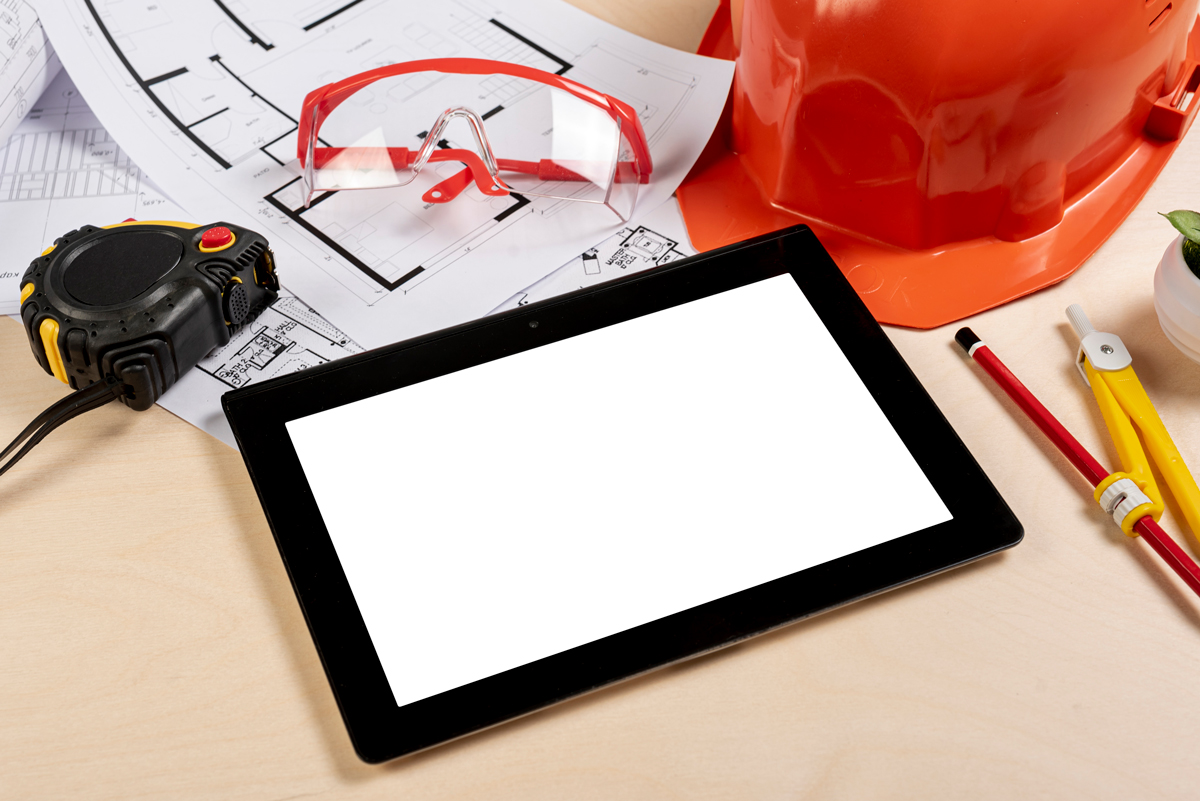
- Monitor the Environment: Environmental monitoring is becoming increasingly important in construction site management, as it ensures that construction projects are environmentally sustainable and do not hurt the environment. IoT technologies can be used to improve environmental monitoring on construction sites, providing real-time data about environmental conditions. For example, sensors can be used to monitor air quality, noise levels, and water quality, ensuring that construction projects are environmentally sustainable.
Suggested article for reading: Construction Monitoring Solutions: Your Complete Guide
Challenges and Limitations
Implementing IoT applications in various industries, including construction, comes with its set of challenges, but there are also solutions to address these issues. Here are some common challenges and their corresponding solutions:
Challenge 1: Data Security and Privacy
Challenge: IoT devices collect and transmit vast amounts of data, making them vulnerable to security breaches, data theft, and privacy concerns.
Solution: Implement robust security measures, such as encryption, access controls, and regular software updates. Data anonymization and compliance with relevant data protection regulations (e.g., GDPR) are essential for safeguarding privacy.
Challenge 2: High Implementation Costs
Challenge: Acquiring and deploying IoT devices and infrastructure can be costly, particularly for small and medium-sized businesses.
Solution: Explore cost-effective IoT solutions and consider scalability. Over time, the benefits of improved efficiency and data-driven decision-making can outweigh the initial investment.
Challenge 3: Interoperability
Challenge: IoT devices from different manufacturers may use various protocols and standards, leading to interoperability issues.
Solution: Use middleware and IoT platforms that support multiple protocols and facilitate device integration. Standardization efforts, like the adoption of common communication standards, can help address this challenge.
Challenge 4: Scalability
Challenge: As businesses grow and adopt more IoT devices, managing and scaling the infrastructure can become complex.
Solution: Plan for scalability from the beginning. Use cloud-based IoT platforms that can handle large numbers of devices and data. Implement device management tools for efficient scaling.
Challenge 5: Energy Efficiency
Challenge: Many IoT devices run on batteries, and energy consumption can be a limiting factor for remote or mobile applications.
Solution: Use energy-efficient IoT devices and explore energy harvesting technologies (e.g., solar, kinetic, or thermal energy) to extend device lifespans.
Challenge 6: Connectivity Issues
Challenge: In remote areas or within large structures, maintaining reliable connectivity for IoT devices can be challenging.
Solution: Use a combination of communication technologies, such as cellular, Wi-Fi, LoRa, or satellite, to ensure connectivity in various environments. Mesh networks and edge computing can help address connectivity challenges.
Challenge 7: Data Overload
Challenge: IoT devices generate massive amounts of data, potentially overwhelming systems and users.
Solution: Implement data filtering and aggregation at the device level to reduce data transmission. Use analytics and machine learning to process and derive insights from relevant data efficiently.
Challenge 8: Resistance to Change
Challenge: Workforce resistance and the need for training to adopt new IoT technologies can be barriers.
Solution: Provide comprehensive training and change management programs for employees to ensure they are comfortable with new IoT systems. Highlight the benefits of IoT for their work.
Challenge 9: Regulatory Compliance
Challenge: Different regions and industries have specific regulations governing IoT data, privacy, and security.
Solution: Stay informed about local and industry-specific regulations, and design IoT solutions to comply with these requirements.
Challenge 10: Maintenance and Updates
Challenge: IoT devices require regular maintenance, updates, and potential replacements.
Solution: Develop a robust device maintenance and management strategy. Utilize over-the-air (OTA) updates to keep devices up to date. Plan for device lifecycle management.
Addressing these challenges proactively and with careful planning can help organizations successfully implement IoT applications and harness the benefits of increased efficiency, data-driven insights, and improved decision-making.
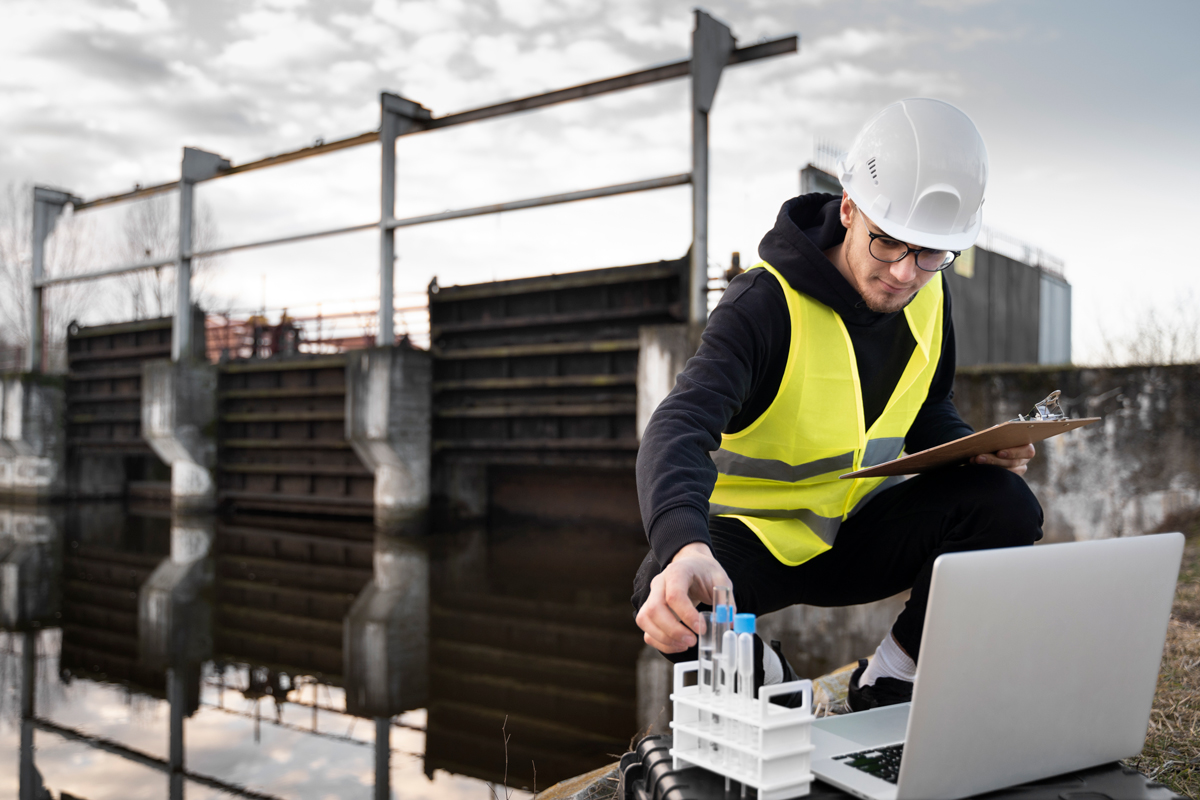
What Can We Expect from the Future?
As we look to the future, the construction industry can anticipate even more advanced sensors, improved data analytics, and increased automation, all of which will contribute to a more efficient, safer, and cost-effective construction process. The integration of IoT with other cutting-edge technologies, such as artificial intelligence and blockchain, will be areas of interest. Additionally, the workforce may need to adapt to the changing landscape of construction due to IoT, sparking discussions about job displacement and new training requirements. Cybersecurity will remain a paramount concern in the continued adoption of IoT. Overall, IoT has brought transformative change to the construction industry, offering a bright and promising future.
Improved sensors, better data analytics, and increased automation are expected to contribute to the promising prospects of IoT in construction. More efficient construction processes, improved safety, and reduced costs are likely to result from this. IoT in construction is likely to see growth along with the deployment of smart infrastructure and buildings. It is unknown how this will influence the workforce, but there are worries about job displacement and the need for new training and skills. IoT integration with other cutting-edge technologies like AI and blockchain are other themes to keep an eye out for, as is the continuous significance of cybersecurity in IoT adoption.

Conclusion
The Internet of Things (IoT) has ushered in a new era for the construction industry, redefining the way technology is integrated into various facets of the field. IoT, often described as the network of interconnected devices embedded with sensors, software, and connectivity, allows for the seamless collection and exchange of data. It has led to the development of smart buildings, smart vehicles, and smart cities, driving innovation, automation, and resource optimization.
The impact of IoT on construction is far-reaching. Safety on construction sites has greatly improved through real-time monitoring and the use of IoT-enabled tags, which track materials and mitigate safety risks. Meeting deadlines and enhancing performance is facilitated by IoT’s ability to automatically assess material supply and offer additional collaboration time for stakeholders. Maintenance and resource management are more efficient and cost-effective, while concrete curing and structural health monitoring benefit from precise real-time data.
Waste management and budgeting are also streamlined through IoT, helping construction companies adhere to budgets and utilize resources optimally. Beyond these practical applications, IoT is transforming how stakeholders communicate and collaborate, fostering transparency and reducing costs, ultimately enhancing customer satisfaction.
IoT’s potential applications in construction, including sensors, mobile devices, drones, robotics, building automation systems, and wearable technologies, offer unparalleled opportunities for the industry to evolve and prosper. Its benefits, from safety enhancement to cost reduction and quality assurance, are reshaping the construction sector.
Nonetheless, IoT in construction does face certain challenges. Privacy concerns, implementation costs, workforce training, and cybersecurity issues pose hurdles for widespread adoption. Overcoming these challenges will be essential for realizing the full potential of IoT in construction.
Recommended articles to read:
Top 7 Sustainable Architecture Projects
important construction technology in 2024
7 Lean Construction principles and practical examples
Resources: trackunit | indovance
For all the pictures: freepik

